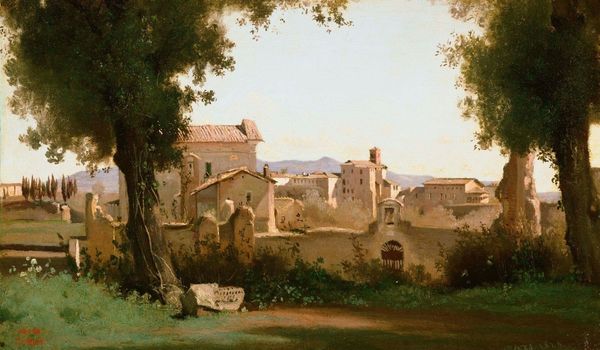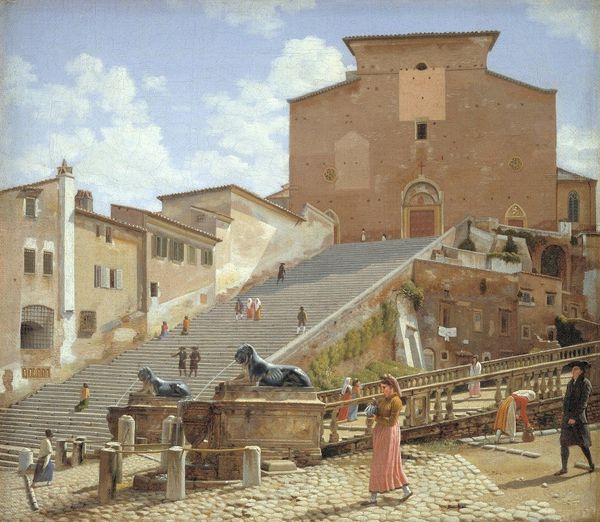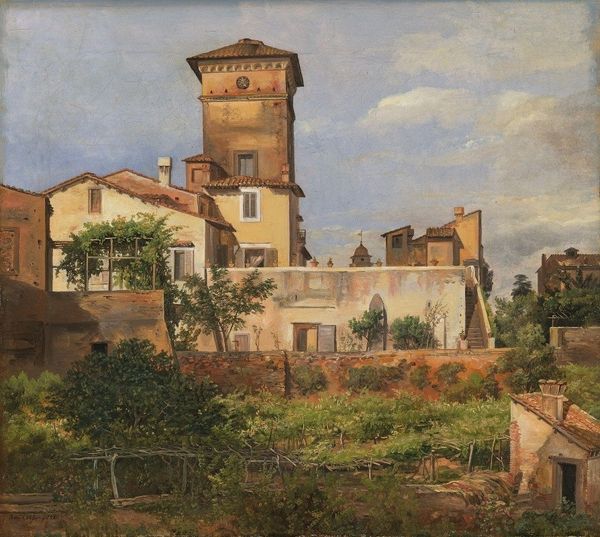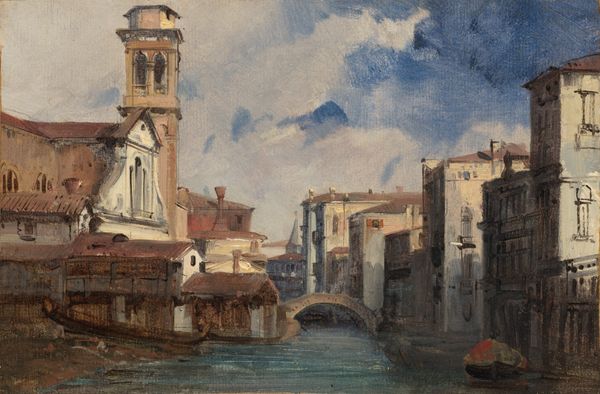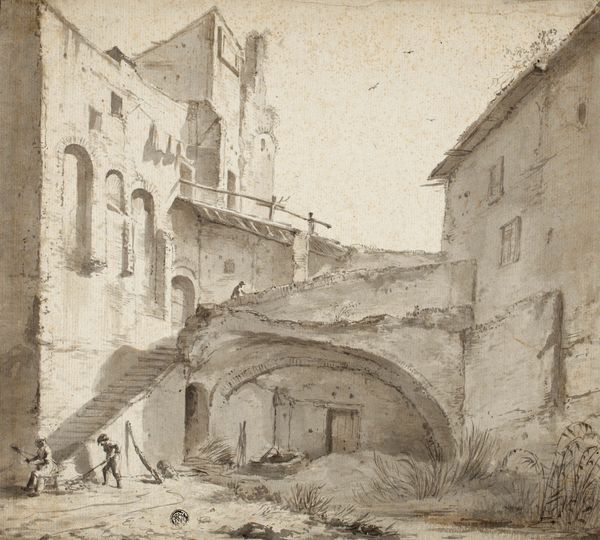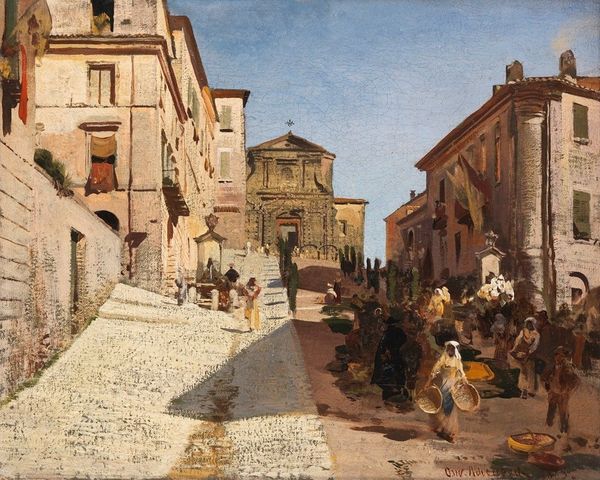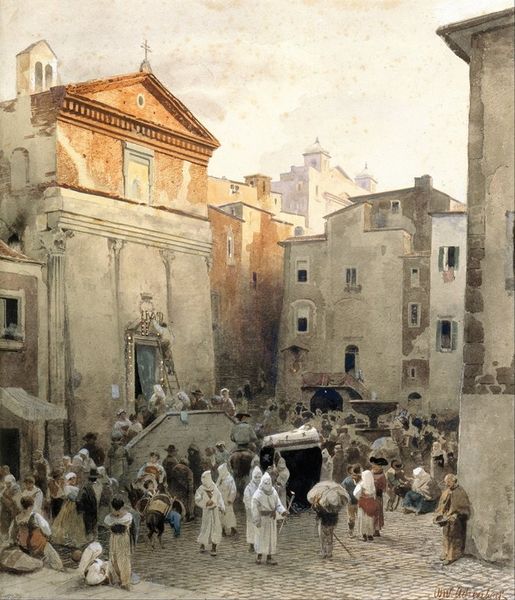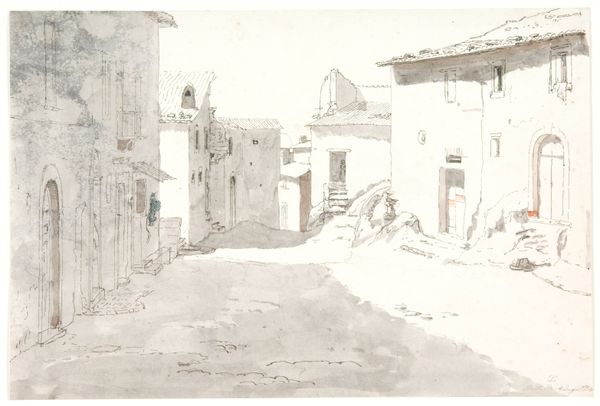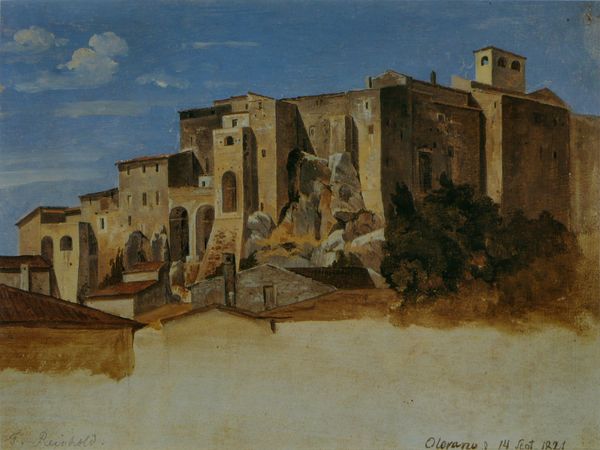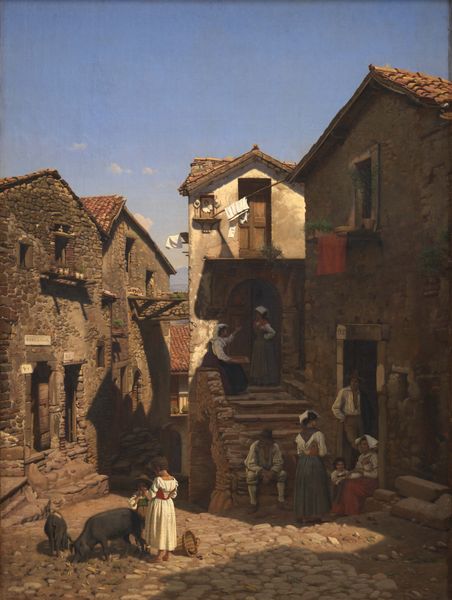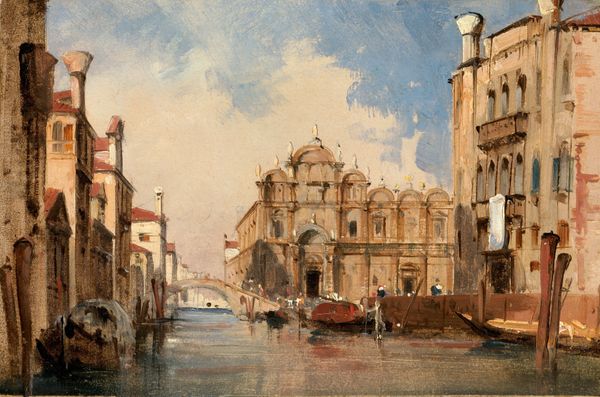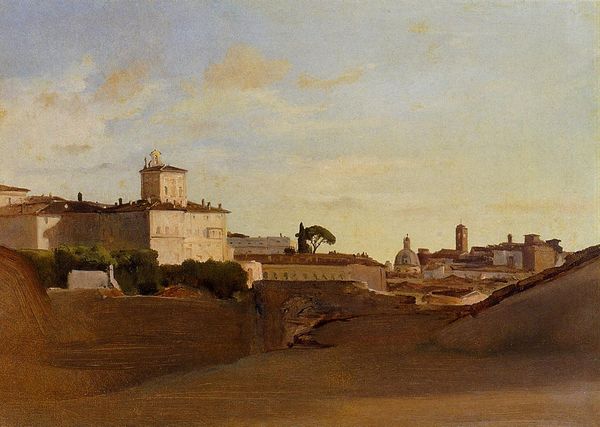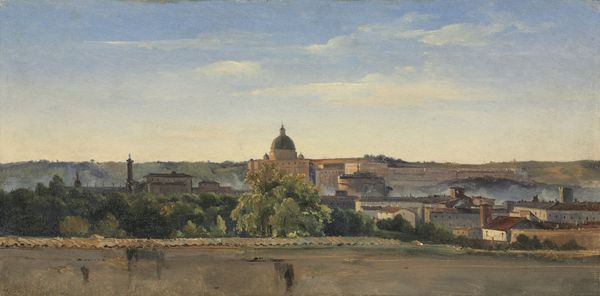
painting, oil-paint
#
painting
#
oil-paint
#
landscape
#
charcoal drawing
#
oil painting
#
romanticism
#
cityscape
#
history-painting
Dimensions: 29.7 × 36.3 cm (11 11/16 × 14 1/4 in.)
Copyright: Public Domain
Curator: This is Pierre Achille Poirot’s "Saint Salvi Church, Albi," an oil painting dating from 1830 to 1840. It captures a somewhat austere cityscape. Editor: The somber color palette and solid architectural forms definitely lend it a certain gravity. I immediately notice the sharp recession into the picture plane. Curator: Absolutely. Poirot presents Albi, a city in southern France, during a time of significant social upheaval. The Church was, and in some ways remains, a powerful and contentious symbol. One could see this work as subtly commenting on power structures and institutional authority in post-revolutionary France. Editor: Visually, I’m drawn to the contrast between the imposing, somewhat rough-hewn stonework of the church and the warmer tones of the surrounding buildings. The church looms, yes, but also offers a kind of visual anchor, an echo of the past rendered in stone. Curator: Indeed. It seems Poirot highlights this juxtaposition. The church, despite its intended spiritual function, also stands as a testament to historical continuity, often entangled with political dominance. Note the solitary figure, perhaps observing this complicated history unfolding around him. It speaks of spectatorship to structural power. Editor: That figure tucked in the corner really is fascinating. A bit like an unblinking witness…The church facade also intrigues me. Note how it’s punctuated by arches. Throughout history, arches often symbolize transitions—thresholds to sacred or transformative spaces, perhaps underscoring the individual's position in relation to larger societal constructs. Curator: Precisely. These historical and religious architectures become physical metaphors, if you will, embodying and reinforcing dominant narratives. Editor: The artist prompts us to reflect on the weight of tradition, etched in stone and shaped by social and political realities. Curator: And I would add, prompts us to consider whose perspectives are privileged in the chronicling of such history. Editor: So true! A quiet, thoughtful painting that continues to speak across the centuries.
Comments
No comments
Be the first to comment and join the conversation on the ultimate creative platform.
